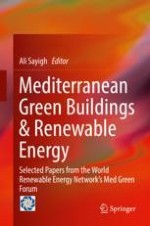2017 | OriginalPaper | Buchkapitel
47. Assessment of Airflows in a School Building with Mechanical Ventilation Using Passive Tracer Gas Method
verfasst von : Jessika Steen Englund, Jan Akander, Mikael Björling, Bahram Moshfegh
Erschienen in: Mediterranean Green Buildings & Renewable Energy
Aktivieren Sie unsere intelligente Suche, um passende Fachinhalte oder Patente zu finden.
Wählen Sie Textabschnitte aus um mit Künstlicher Intelligenz passenden Patente zu finden. powered by
Markieren Sie Textabschnitte, um KI-gestützt weitere passende Inhalte zu finden. powered by
